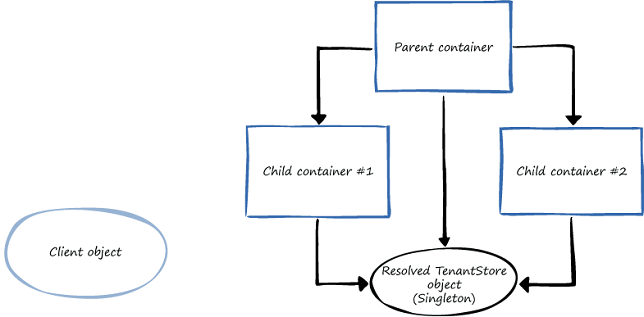- Containercontrolledlifetimemanager Vs Singleton
- Containercontrolledlifetimemanager .net Core
- Unity Singleton Class
- When you use RegisterType or RegisterInstance combined with InjectionFactory in old version of Unity, the following complier warning will be displayed: ‘InjectionFactory’ is obsolete: ‘InjectionFactor.
- I'm using the Unity.Container NuGet package 5.11 and I want to register an open-generic type such that each concrete type is a singleton. Background: I'm working in an old-school ASP.NET WebForms.
Here, we are going to install Unity container in Visual Studio using NuGet.
Containercontrolledlifetimemanager Vs Singleton
C# (CSharp) Microsoft.Practices.Unity PerResolveLifetimeManager - 6 examples found. These are the top rated real world C# (CSharp) examples of Microsoft.Practices.Unity.PerResolveLifetimeManager extracted from open source projects. I absolutely love inversion of control, it is a best practice that I encourage developers to use in every project that they work on. However, like any great tool, dependency injection can cause serious problems if you do not fully understand it; lifetime management in particular.
First, we need to create a project in order to use Unity. It can be any type of project such as a class library, a console, a web, windows or any other C# or VB.NET project. We will create a Console Application to demo Unity container. So, click on New Project from the Start page of Visual Studio. It will open the New Project popup as below.
Enter a Name for the project and a location and click OK. This will create a new console application project.
Now, we need to install Unity in this project to be able to use dependency injection in the project. So, right click on the project node in the solution explorer and select Manage NuGet Packages, as shown below.
Now, we can search for Unity from the browse tab of NuGet. Enter 'unity' in the search box and it will list all the libraries or plugins which contain the 'unity' word, as shown below.

Now, click on the Install button in the right pane, as shown below.
This will add all the references of Unity into your project as shown below.
Now, we are ready to use Unity to implement automatic dependency injection in our project.
-->The ContainerControlledLifetimeManager type exposes the following members.
Containercontrolledlifetimemanager .net Core
Constructors
| Name | Description |
|---|---|
| ContainerControlledLifetimeManager |

Methods

| Name | Description |
|---|---|
| Dispose | Overloaded. |
| Equals | (Inherited from Object.) |
| Finalize | (Inherited from Object.) |
| GetHashCode | (Inherited from Object.) |
| GetType | (Inherited from Object.) |
| GetValue | Retrieve a value from the backing store associated with this Lifetime policy. (Inherited from SynchronizedLifetimeManager.) |
| MemberwiseClone | (Inherited from Object.) |
| Recover | A method that does whatever is needed to clean up as part of cleaning up after an exception. (Inherited from SynchronizedLifetimeManager.) |
| RemoveValue | (Overrides SynchronizedLifetimeManager.RemoveValue().) |
| SetValue | Stores the given value into backing store for retrieval later. (Inherited from SynchronizedLifetimeManager.) |
| SynchronizedGetValue | Retrieve a value from the backing store associated with this Lifetime policy. (Overrides SynchronizedLifetimeManager.SynchronizedGetValue().) |
| SynchronizedSetValue | Stores the given value into backing store for retrieval later. (Overrides SynchronizedLifetimeManager.SynchronizedSetValue(Object).) |
| ToString | (Inherited from Object.) |
Unity Singleton Class
See Also
